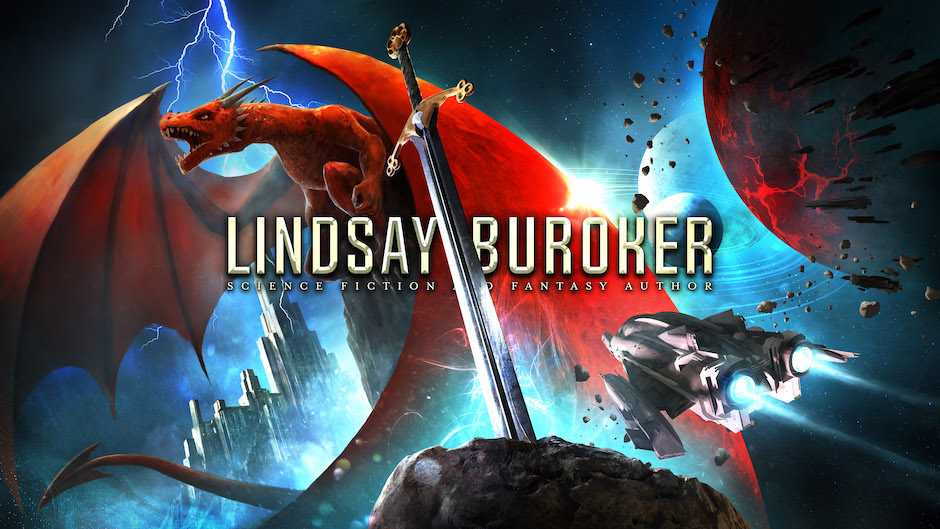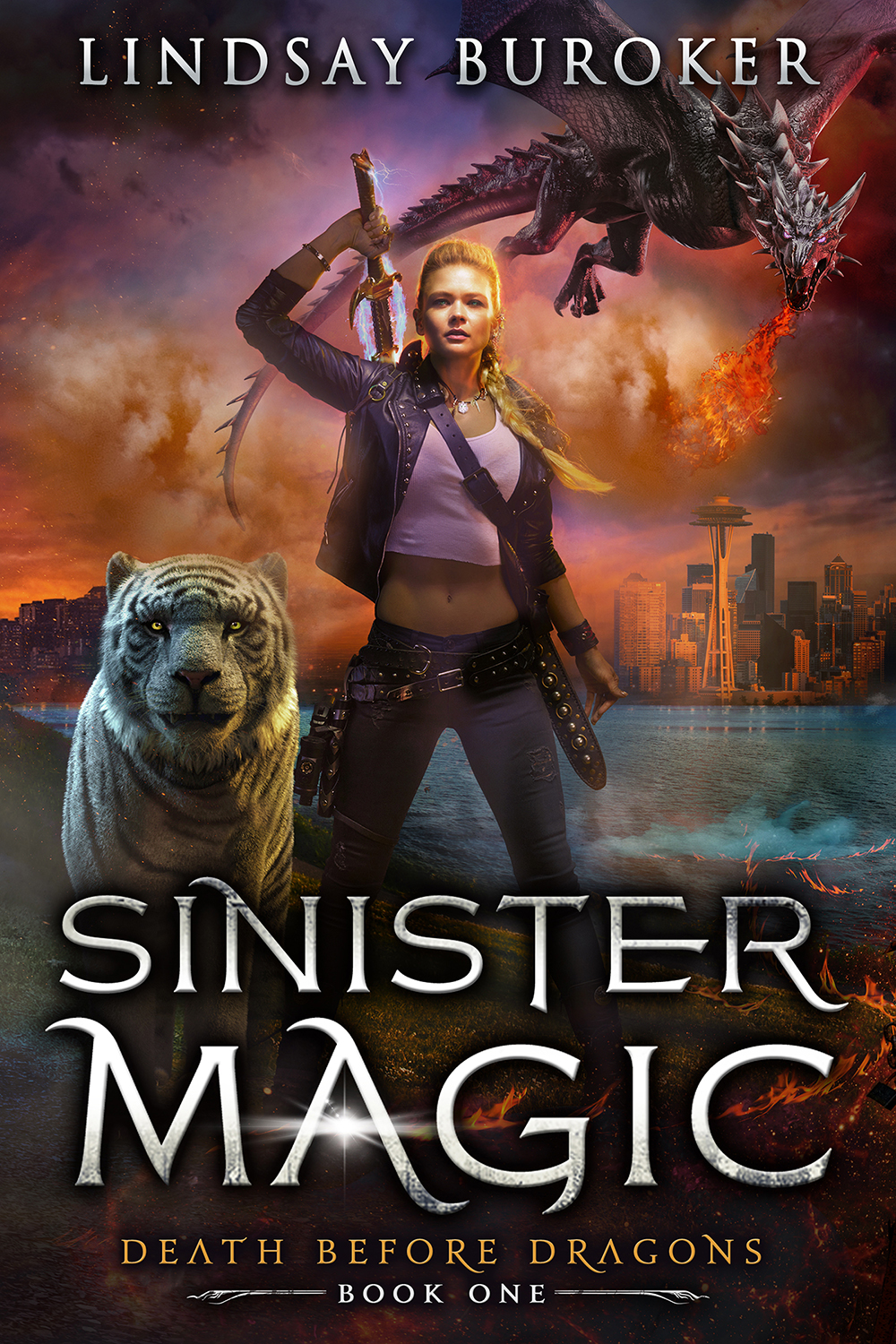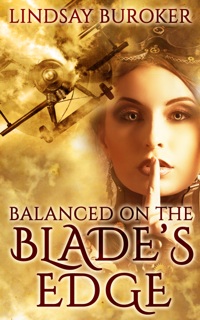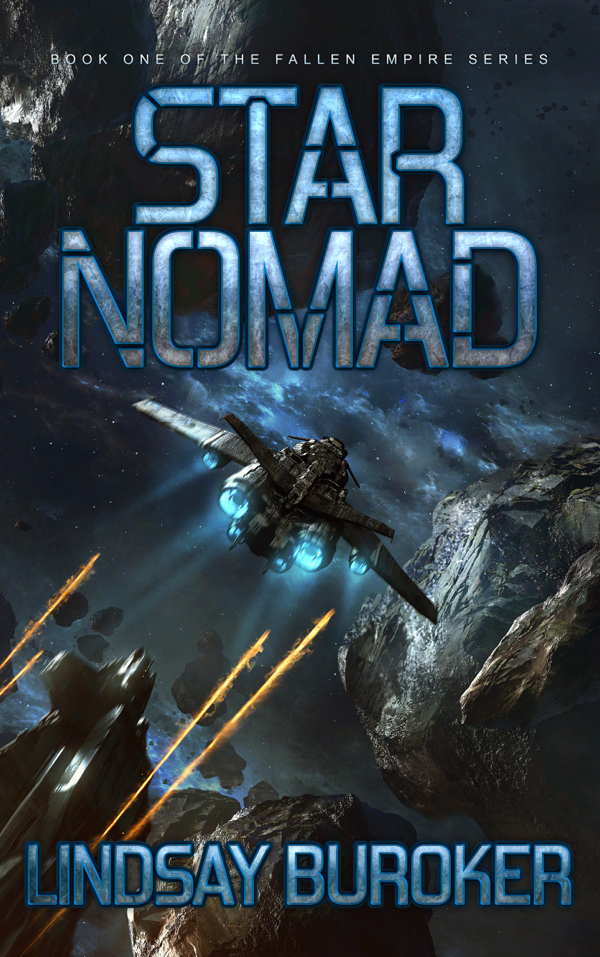I went skimming through the traffic logs this morning to see what search terms people were using to find my blog and picked out a few questions related to ebook pricing. I figure if one person is asking something then others may be wondering about it too. Pricing can be a heated topic in the independent e-publishing world and almost everything in here will simply be my opinion based on my experience of the last two years, six novels, and numerous odd short stories and novellas. I hope something helps!
Ebook Pricing Q&A
How much should I charge for my novel?
As you probably already know, Amazon and many of the other retailers reward authors and publishers who create price points between $2.99 and $9.99 by offering a 70% cut of earnings. Sell for less than that or more than that and you’ll only receive 35%. So a $2.99 ebook brings you a little over $2.00 whereas a $0.99 ebook only brings about 30 cents. For those who want specifics, here’s a chart with the breakdown for each price point.
Anything in that $2.99 to $9.99 range is going to bring what I consider to be a decent return, per reader, for a full-length novel. At 30-60 cents, it’s always felt (to me) that you can get more out of giving the novel away for free (basically using it as a loss leader to encourage sales of other books, an established and effective technique for many authors publishing series).
Of course, earnings depend on units sold, not simply earnings per unit sold, so, yes, if you can sell oodles of books at 99 cents, you can do well for yourself. That worked for some self-published authors in popular genres in 2010. This year, however, Amazon tweaked its algorithms, apparently to cut down on the numbers of 99-cent titles rocking the popularity lists. More on that in this “Updates to Amazon Book Ranking Algorithms” interview from earlier in the year.
I personally think about $5 per full-length novel is a fair price all around. It gives you far higher per-book earnings than traditionally published authors are receiving (even those whose ebooks are selling for $10+), it gives the readers a deal when compared to most traditionally published ebooks, and it’s often considered a fair price by those who feel that digital books should cost less than the dead-tree variety since paper, ink, and shipping aren’t a part of the equation. Lastly, it separates you from the legions of indie authors charging $0.99, $1.99, and $2.99 for their novels (often on the belief that they won’t be able to sell at a higher price because they’re not established names — I started out at $2.99 for just that reason). A lot of readers still walk warily around self-published books, so it can only help if you’re not giving obvious clues that your book was never vetted by a gatekeeper.
How much should I charge for a short story?
For ebooks that come in under 10,000 words, authors often choose 99 cents as a price point, and I’m in agreement with that choice. Yes, you’re stuck at the lower royalty rate, but a lot less work goes into writing and editing a piece that short. If reviews and sales rankings are anything to go by, readers aren’t keen on the idea of $2.99 short stories, even by established authors.
But that’s okay. If you sell a 100 copies a month of a 5,000-word, 99-cent story, you’re still making more that year than you’d receive if you sold that same story to a pro-paying magazine. If you have a fan base established, you can sell a lot more copies than that in the first month or two you publish it. During release month, I sold about 1400 copies of my last short story (Enigma) even though I also mailed out a Smashwords coupon so readers could download it for free (and many people took advantage of that). If it follows the pattern of my other short stories, it should continue to sell 100+ copies a month. This is from a mid-list self-published author, not a best-selling indie rock star. It’s why I don’t bother submitting anything to magazines or anthologies any more. Even at 99 cents, you can do pretty well for the amount of work that goes into a short story.
What’s up with all those free ebooks? Why would an author give away her hard work? Are these folks smoking some of that newly legal Washington pot?
I already touched on the idea of using a free ebook (a short story, a novella, or even a full-length novel) as a loss leader, the idea being that you can sell more of your other books by giving away free samples. This works particularly well with a series (and particularly less well without a series), assuming your free book is well-written, well-edited, etc. Having awesome cover art doesn’t hurt either.
Another reason you’ll see authors offer books for free is because they’re a part of the Amazon KDP Select program (which demands exclusivity in exchange for enrolling your ebook in the Amazon Prime lending library). As a promotional perk, these authors are allowed to make their ebooks free for five days a quarter at Amazon. Receiving a pile of downloads during the free days used to help boost a book’s sales ranking and visibility when it came off of the free days, though Amazon has nerfed that particular “feature” this year so that it’s less effective (though not totally ineffective). There’s more on that in the interview I mentioned above.
Wait, so how do you make your ebook permanently free at Amazon?
Though one never knows how long such tricks might last, you can currently make your ebook free at Barnes & Noble (through Smashwords distribution), Kobo, and iTunes, and Amazon may price-match. Here’s a video I did last year to explain the free ebook/price-matching thing in more depth.
How do you make a living as an indie author?
Not exactly a question about price points, but variations of this one show up in my traffic log every day, so here’s the quickie “formula.”
1. Hone your craft for years, receive feedback from mentors and peers, hire an editor, and put out as rocking of a first book as you can.
2. Write many more books in the coming years (I did hit the “make a living” point about a year into this, but I had four novels and some shorter ebooks out at that point), and put something out on a regular basis (as much as we’d like to wish and hope otherwise, more books are always being published and it’s rare for any one book to stay on the radar for long).
3. Promote, promote, promote. As time goes on, if you do things correctly (see next step), you’ll be able to do less promoting to random people you don’t know and more to your existing fans (i.e. blog, Facebook, Twitter announcements, fun extras — character interviews, cut scenes, etc.) who will then (we hope!) share news of your work of their own accord.
4. Have a web presence (whether you need to blog or not is always up for debate — it sells some books for me directly, through the links at the right, but not a lot in the grand scheme of things) that you direct readers to (i.e. at the end of your ebook) where they can sign up for your newsletter (see my post on newsletter marketing for authors). This way, you can immediately get in touch with fans when you have a new book out. Right now, if you get a thousand purchases of your book on the day you release it, it will be enough to propel you into the Top 1000 at Amazon, something that will, at least temporarily, put you into the Top 10-20 in most sub-categories (i.e. fantasy > epic) and make you a “hot new release” in your category. Yes, this fades once sales slow down, though for some authors with books with wide appeal, this may bring the necessary attention to become a best-seller for weeks or even months on Amazon. (No, that hasn’t happened with any of my stuff, but you can make a nice living simply by cultivating a core fan base and selling to them — if you haven’t yet, read Kevin Kelly’s 1,000 True Fans post.)
Any other questions related to pricing or thoughts on these? Please leave them below.
Update: You may also want to read my post on Ebook Pricing Strategies for a First or Stand-Alone Novel.




I don’t understand ebook pricing when it exceeds the paperback price, and sometimes the hardcover price. For instance, I really enjoyed Laini Taylor’s Daughter of Smoke and Bone and wanted to buy the second novel. Paperback was £6.29, hardcover was £8.54 and the Kindle version was £7.99. I refused to buy it at 55p less than a hardback and so will get it at the library. There is a cost (editing, covers, formatting, marketing, etc.) that is shared amongst all versions. But surely a hardback book has a real cost in materials, storage, shipping that an ebook does not? I’ll stop now before I start ranting. 😀 That, however, is my pet peeve as a reader – I want to see a real difference between an ebook price and a paper copy version.
Yea, it’s crazy sometimes! I couldn’t tell you what publishers are thinking when they set some of their prices. I do know that they’ll price an ebook that’s just come out higher, so as not to cannibalize hardback sales, but for an older title (where a paperback is available), you certainly wouldn’t think it’d be any more than the paperback, unless it has something to do with Amazon (or other stores) discounting the paperback of their own accord.
I totally agree with this comment, this is a publisher maximising profits and not thinking about how a customer will view this obvious exploitation, not to mention damaging the reputation of the author. It’s just madness. Good point Ravven!
I think the hardest stories to set a price for are those of middle length, like the novelettes and novellas. Do you have any price recommendations for those stories, Lindsay?
They can be tough to price, Sandra. I think it’s useful for each author to have a pricing scale that makes sense to them and to readers. If short stories are 99 cents and novels are 4.99, then maybe 2.99 makes sense for a novella.
I made my Peacemaker novella 2.99 since it’s 40,000 words, so quite meaty by novella standards. My shorter Hunted novella (I think it’s around 20-25k) is $1.79 or so. I haven’t tried that one at different price points, but since my novels are all over 100,000 words and are under $5, I didn’t want to go too high on works that are 1/5th of the length.
Also, one thing you can do with short stories and novellas, if you want to hit that 70% cutoff but aren’t having much luck selling at 2.99, is to bundle them into a collection, so it’s a better deal for the reader.
Terrific advice as always Lindsay! And yes, I too am curious to hear your thoughts on novellas. I have a few coming up in the beginning of the year *cough* and your opinion on pricing is appreciated!
Thanks again as always, Lindsay, for a great post with many helpful insights and nuggets of wisdom.
I do have a question about Smashwords distribution to Barnes and Noble for a free book . . . if you’re using Smashwords to distribute a free book to Barnes and Noble, does that mean that you should NOT upload that book to Barnes and Noble yourself through PubIt?
And if some of your books are uploaded through PubIt and some distributed through Smashwords, does that cause any difficulties in having the books linked together when searching by author name or clicking on an author’s name in a listing?
Good questions, Mark. I do have a couple of stories that go to B&N via Smashwords (because of the deal Smashwords has, you’ll actually end up making more on 99-cent ebooks), and they do show up along with my PubIt-published titles when someone searches for my name.
For my freebie, I originally published it through PubIt at 2.99, and it’d been for sale at B&N for a year before I decided to try free via SW distribution. I never did un-publish the PubIt version, but B&N seems to have figured it out and linked the two versions anyway. I’ve heard that most authors un-publish the PubIt title though (when the free one comes online).
Pingback: Wednesday Wanderment | Unearthing Words
Lindsay, thanks for another great post! This is very timely. I’ve been pondering the pricing issue for my upcoming superhero serial. Each episode will be running 20-25K, a shorter novella, with six episodes in a “season. I can see arguments for pricing at $1.99 and $2.99. Then there’s the possibility of a season bundle, which makes the lower episode price seem more appropriate. Then again, is bundling a serial’s episodes into a book a good idea? I know a couple of authors who do that, but do you risk having readers hold off until the season is available in one book? That’s an argument right there for a lower per-episode price, $1.99, or even $1.49. A bundle of six 20-25K novellas is 120-150K in length–probably don’t want to price that much above $5, maybe $6.
What are your thoughts on serial pricing and bundles?
I’ve yet to try a serial for myself, so can’t speak from experience here. I know Sean Platt and David Wright are currently doing 99 cents or free for their first episode and 2.99 for the subsequent ones (six episodes total for a “season”), then the full season (complete ebook) for 5.99. I’m not sure if they started out with that pricing or waited to raise the individual episodes to 2.99 until the complete season was out.
You’d probably have the most chance of having the serial take off and get popular if you do 99 cents for all of them, then maybe 4.99 for the entire book when it’s out. That’d give folks a discount and encourage them to purchase the whole thing, and, of course, you’d get the 70% royalty at that point.
Let us know how it turns out!
Pingback: Successful Indie Author Lindsay Buroker on E-book Pricing | dan-harris.net
Lindsay!
Some great insights into ebook pricing here… I’m definitely going to come back to this when I’m ready to test the waters!
I’m interested in the concept of free, “gateway” or “loss leader” books as you described them… wouldn’t it be better to do it with a shorter work, say 60 pages, rather than give an entire novel away free?
You can certainly do that, Isaac. The first freebie I gave away was my Ice Cracker II short story (about 6,000 words). I only had one book out in my “series” then, but I had the short story, which used the same characters. I included a short excerpt of the novel at the end and made the ebook free on Smashwords and Barnes & Noble (at the time, I didn’t know about the Amazon price-matching deal). It’s what helped me to sell my first books at B&N.
That said, when I had three novels out in my series, I made the first entire book free, and that resulted in a much bigger boost in sales. I think it takes people a while to get into characters and a story, and that many just prefer novels to short stories in general.
Pingback: Friday Features #35 - yesenia vargas
After reading some of your earlier advice, I split my (potentially yet in a paper version) non-fiction 300k-word material…Revisiting Scripture…into six E-books in a series at about 50k-words each and selling at $2.99 on Kindle…well the first one is out and the others are following as I clean up the material. I figure the first $2.99 won’t stop someone who wants to check it out and, if they buy the entire series they are out a not unreasonable $18 of which I would get $12. I wonder if the first should cost less, but there is still the “look inside” feature to give a feel.
I actually bought a romance I had started because it dawned on me that the $0.99 is not enough to even count.
Pingback: Writing Blog Treasures 12~15 | Gene Lempp ~ Writer
This is all well and good, but how do you price non-fiction.
Thanks
Have you already built a platform, established yourself as an authority through blogging/speaking, and have a mailing list full of folks who will buy? Or are you starting from scratch? If the latter, you may want to try a 99-cent or free report to give people a taste of what you’re all about. You can always link to the other books at the end.
For a full-length book, I think people are used to paying more for non-fiction, but it still doesn’t make much sense to go above $9.99 which would drop you from a 70% to 35% cut at Amazon.
Good luck!
How about non-fiction with a lot of colour pictures (paintings and photographs)? I would like to promote purchase of hardcopies (currently 40 8.5″x5.5″ pages in InDesign) that would have to priced much higher.
I would think eBooks are not a good choice for a book full of paintings and photos…especially for b&w eReaders. I see endless discussions on the troubles of formatting images so they work on all the platforms.
Thanks a lot for your insights Lindsy. They’ve been extremely helpful.
My husband is always telling me to lower the price of my books, but I don’t think that’s fair. Specially because I have the extra cost of translating all my work to english, as I’m a Portuguese author.
I’m selling my first novel at $2.99 (176 pages), but I’m thinking about selling my second one for $4.49 (220 pages)
Pingback: Publishing Resource Guide.com: 10 authors answer: What’s the best way to price your ebook?
Hello, fantastic article. You’ve basically summed in a few paragraphs what takes others 10 pages to do.
Can you please take a moment to answer my question?
I am a new author. I’ve never published on kindle before, but I plan on making the leap in the coming weeks. Now, my book is a fantasy of 386,000 words – roughly 700 pages. What would be your recommendation in regards to the 35% option or the 70% option?
I’ve also studied the fantasy line on Amazon and a lot of them seem to be charging $3 up. I live in Ireland by the way.I’d really appreciate your input hereThanks.
Hi Brian,
That’s more than 700 pages, at least if we’re talking paperback novel pages. That’s longer than all except two of the Robert Jordan books (http://www.cesspit.net/drupal/node/1869 has a list of word counts for some popular epics). I wouldn’t even think of charging less than $2.99 for something like that, and I’d probably see if there was a way to break it into a trilogy. There are a lot of things you can do with marketing a series (sales of free or 99 cents on the first book, then full price on the others) that don’t work as well with a stand-alone book. You might also find some people wary about picking up something so thick from an author they haven’t heard of yet. Also, if you price it high (i.e. $7+) because it’s such a big book, you might also find people hesitant to give it a try.
Good luck!
Thank you Lindsey, funnily enough I was just on to my writing teacher earlier and she said the exact same thing about the trilogy. Strange!
I see where you’re both coming from, however I would be very wary of how well 3 parts would hold up individually, as opposed it all in one. But, you know more than me about the market so I trust your judgement.
So you think that I should make it into a trilogy, choose the 70% royalty option, charge low for the first part, then raise the price as I go? Do I have that right?
Thanks again for getting back to me. You have no idea of how confused I was by this.
When it comes to pricing, I tend to think that the “category” of the book must be taken into account rather than going by word count or pages. For example, I would think a book covering a biography would be worth more than a novel when comparing apples-to-apples so than general statements do not hold unless we are able to associate them with a specific category.
Some really interesting things to think about here. I wonder if you’ve tried Amazon’s beta author profit maximization tool yet for pricing. I just tried it and raised the prices on some of my books (although not my 99 cent novellas). I’m curious to see what will happen. It doesn’t seem that you sell more copies at the higher price – just that the profit point increases, which is kind of what you mentioned in this post. Right now, since sales are dropping off for most of my books, I’d prefer to do what I can to get more – not less – even with lower profit. My plan, though, is to run some free promo days after the price change takes effect, in the hopes that customers will see the book as a better “deal,” thus driving more downloads and improving overall rankings. We shall see…